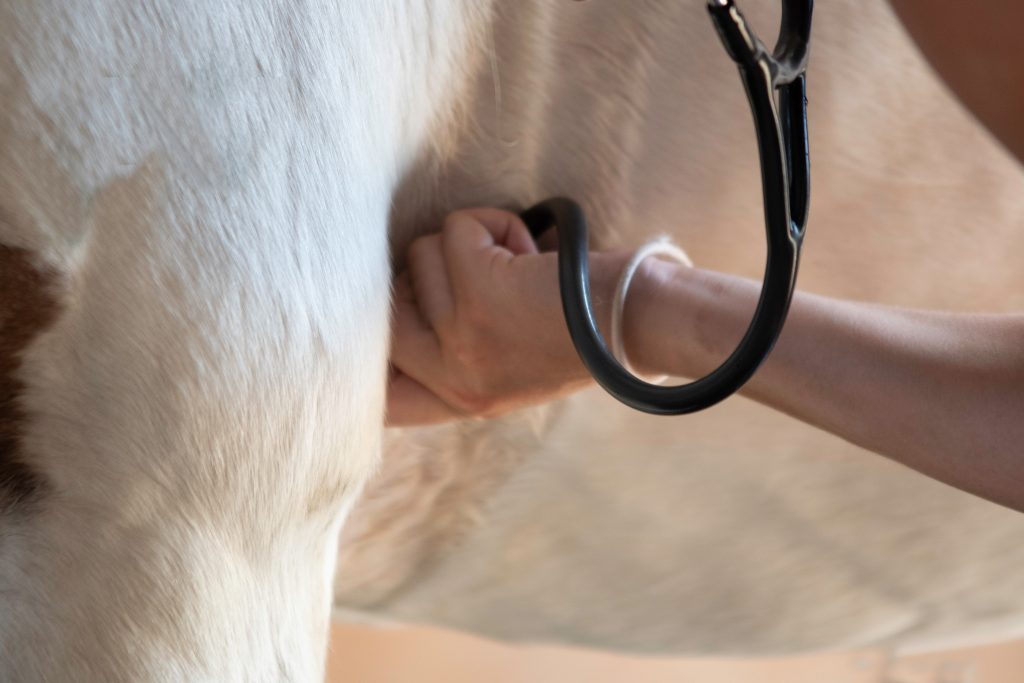You know your horses well. That is why any vet worth their salt will listen to you first before starting a clinical exam. However we thought it was important that you know your horses clinical parameters so that if you suspect something isn’t quite right you can check and either know it is important that you vet comes out immediately or that you can reassure yourself.
We all know that horses can’t talk (though sometimes we all wish they could). Therefore it is important to know what is normal for your horse and what is not.
Heart Rate:
Horses are prey animals, therefore they won’t often show obvious signs of pain. Heart rate can be an indicator of pain if it stays above the normal threshold for any sustained period of time.
Normal heart rate range is between 30-40 beats per minute. Using a stethoscope, heart rate can be detected under the elbow and should be counted for at least 30 seconds. Any rate above this for any length of time can indicate acute pain.

Temperature:
Normal range is between 37.4 and 38.4. Above this level is when a horse has a temperature. Clinical signs that maybe attached to this are not eating, seeming depressed and not their normal selves. Temperature is taken with a digital thermometer placed in the rectum.

Respiration rate:
Normal respiration rate in a horse is between 8 and 12 breaths a minute. It is best seen when watching the flank of the horse.
It is a great idea as part of your daily routine to know what your normal is for your horse. If you have any further questions, please ask us the next time we see you, we will be happy to show you how to carry out these examinations.
